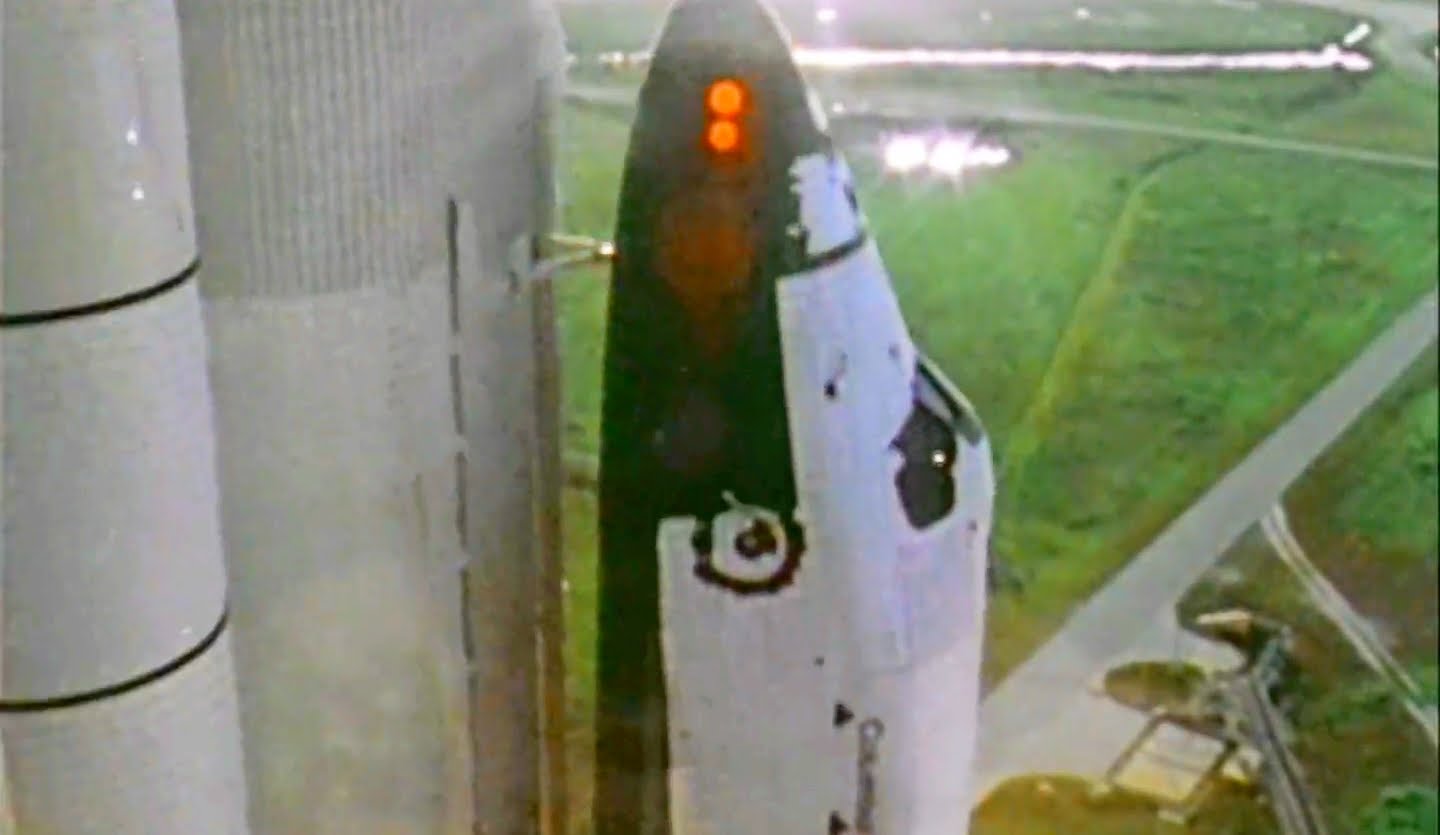more at
“This film documents the first historic flight of a space shuttle, the U.S. spacecraft Columbia, which launched on April 12, 1981. The footage highlights liftoff, the onboard activities of astronauts John Young and Robert Crippen, as well as the landing in Rogers Dry Lake bed in California.”
NASA film JSC-814
Reupload of a previously uploaded film with more improved video & sound.
from the STS-1 Press Kit
The Space Shuttle orbiter Columbia, first in a planned fleet of spacecraft in the nation’s Space Transportation System, will liftoff on its first orbital shakedown flight in April 1981. Launch will be no earlier than 45 minutes after sunrise from the NASA Kennedy Space Center Launch Complex 39A.
Crew for the first orbital flight will be John W. Young, commander, veteran of two Gemini and two Apollo space flights, and U.S. Navy Capt. Robert L. Crippen, pilot. Crippen has not flown in space.
Columbia will have no payloads in the payload bay on this first orbital flight, but will carry instrumentation for measuring orbiter systems performance in space and during its glide through the atmosphere to a landing after 54 1/2 hours.
Extensive testing of orbiter systems, including the space radiators and other heat rejection systems, fills most of the STS-1 mission timeline. The clamshell-like doors on Columbia’s 4.6 by 18-meter (15 by 60-foot) payload bay will be opened and closed twice during the flight for testing door actuators and latch mechanisms in the space environment. Other tests will measure performance of maneuvering and attitude thrusters, the Columbia’s computer array and avionics “black boxes,” and, during entry, silica-tile heatshield temperatures.
The first of four engineering test flights, STS-1, will be launched into a 40.3 degree inclination orbit circularized first at 241 kilometers (130 nautical miles) and later boosted to 278 km (150 nm). Columbia will be used in these four test flights in proving the combined booster and orbiter combination before the Space Transportation System becomes operational with STS-5, now forecast for launch in September 1982.
After “tower clear” the launch team in the Kennedy Space Center Firing Room will hand over STS-1 control to flight controllers in the Mission Control Center, Houston, for the remainder of the flight.
Columbia’s two orbital maneuvering system hypergolic engines will fire at approximately 53 1/2 hours over the Indian ocean to bring the spacecraft to a landing on Rogers Dry Lake at Edwards Air Force Base, Calif., an hour later. The approach to landing will cross the California coast near Big Sur at 42,670 m (140,000 ft.) altitude, pass over Bakersfield and Mojave, and end with a sweeping 225-degree left turn onto final approach.
Young and Crippen will land Columbia manually on this first test flight. A microwave landing system on the ground will be the primary landing aid in subsequent flights, with optional manual takeover. Kennedy landing teams will remove the flight crew and “safe” the orbiter after landing. The first three test flights land on Rogers Dry Lake, the fourth on the main runway at Edwards Air Force Base, and STS-5 will land on the 4,570-m (15,000-ft.) concrete Shuttle Landing Facility runway at Kennedy Space Center.
STS-1 will be the first manned flight using solid rocket boosters. No previous U.S. space vehicle has been manned on its maiden flight.
Space Shuttle, STS-1, NASA, KSC, Shuttle launch, Shuttle landing, John Young, Robert Crippen, spaceflight, spacecraft, first flight, orbit, SSME, SRB, ET, orbiter, space program, astronauts,

